Meet the new concert format
UncategorizedDepressed? You ain’t seen the half of it:
MODESTO, CA – The Modesto Symphony Orchestra (MSO) presents Symphonic Soundtrack on March 15 & 16, 2024 led by Music Director Nicholas Hersh. The weekend’s concerts will be presented in a new format for the MSO. It will have no intermission and includes a program curated by Hersh and the MSO orchestra musicians that features their favorite, shorter pieces of symphonic repertoire. Another new addition is after the concert, all audience members are invited to join Hersh and the MSO orchestra musicians for a party in the Gallo Center for the Arts lobby featuring refreshments, appetizers, and the opportunity to mingle and celebrate the love of music.
“This concert features selections that have been chosen not only by myself—the conductor—but also our musicians,” says Music Director Nicholas Hersh. “When it comes to a typical symphony concert, usually it’s the conductor’s job to pick every piece on the program, which can be great and fun for me as a conductor, but often it can be lonely. It’s an exciting thing to be able to collaborate with our MSO musicians on picking pieces of music that they love to play and putting them all together in one program.”


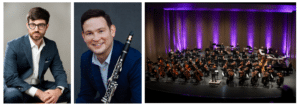
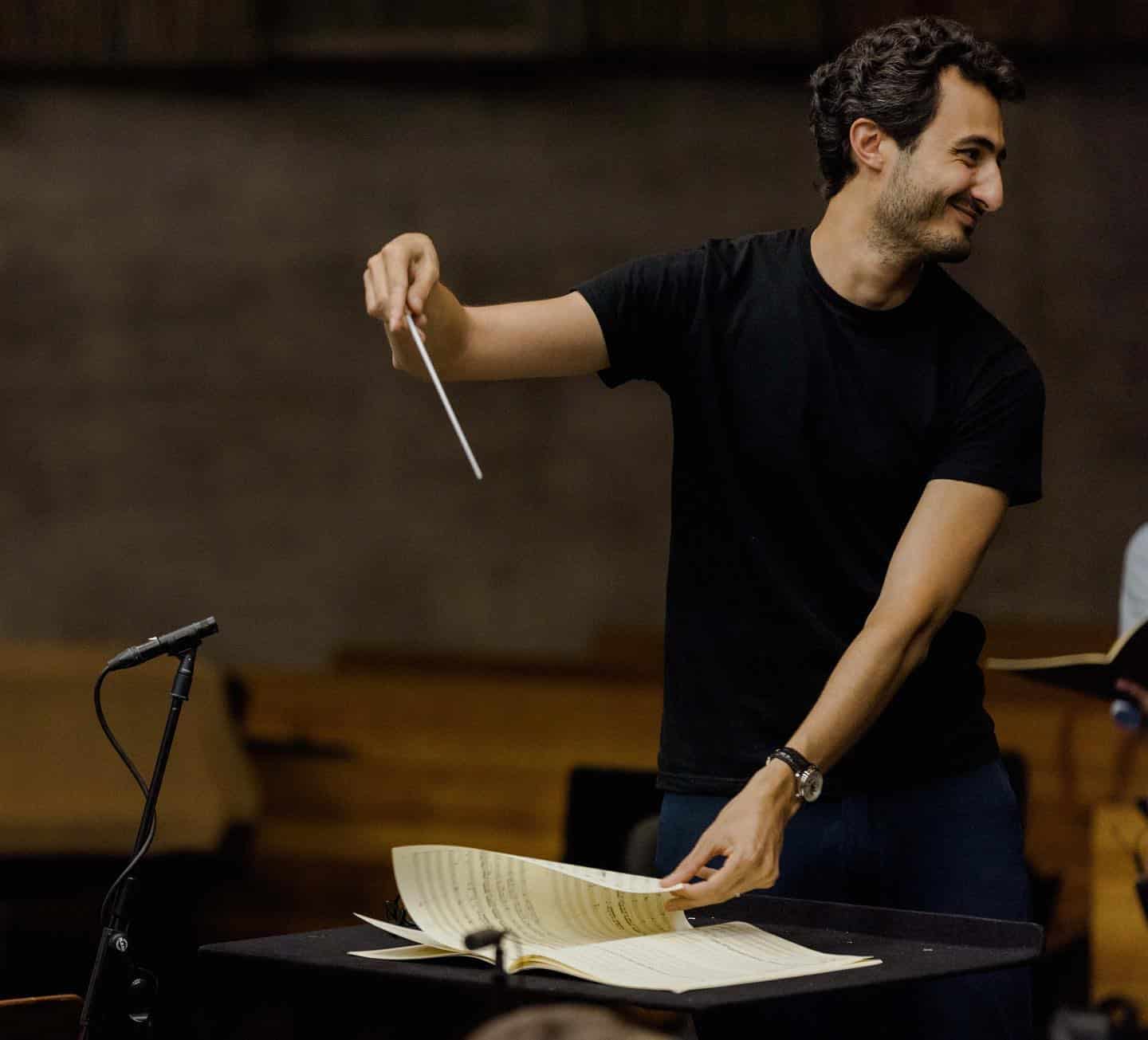
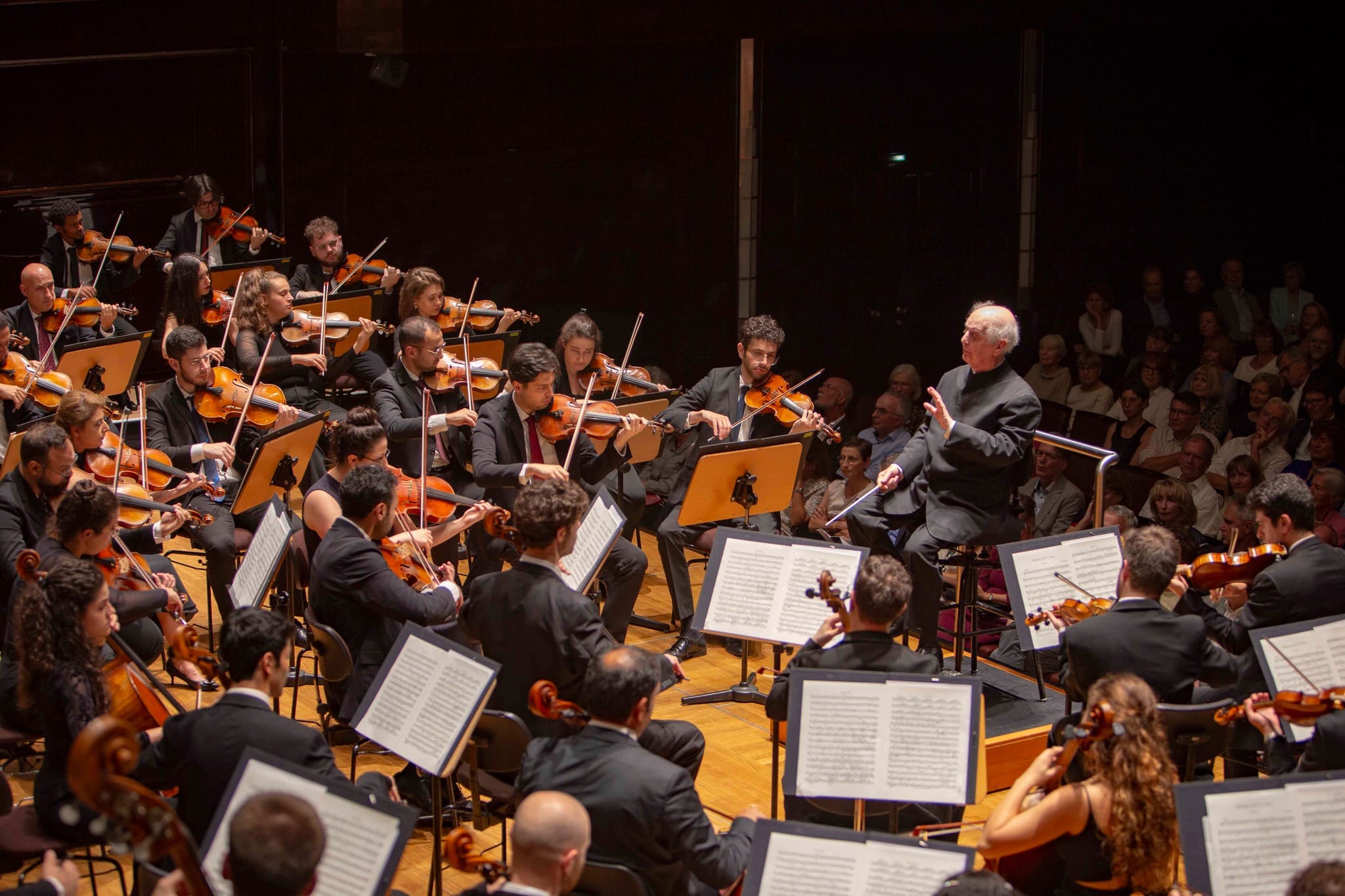
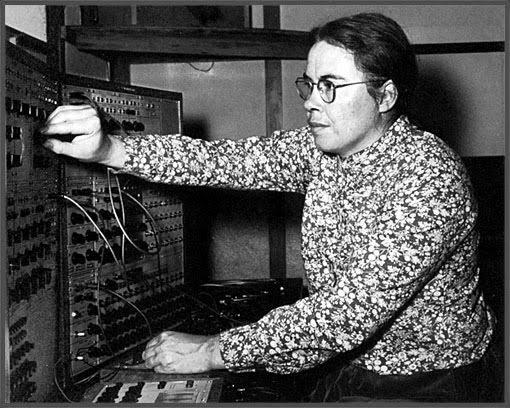
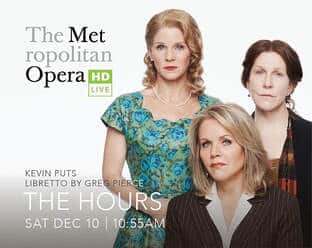
Sorry, what’s the new part??
(Or the depressing part??)
This may not be brilliant, but based on the copy it seems extremely welcoming and collaborative.
This sounds Extremely welcoming!
Whatever needs to happen to increase audience subscription and musician happiness/inclusion. It is very lonely as a Conductor to program an entire season by yourself. Getting ideas from others only spurs the imagination makes the job less daunting.
agreed, this sounds like great fun actually.
This seems to go back to the format as often was practiced in the 19th and early 20th century: short movements, as not to burden the audience too much with seriousness. The after concert party is new and democratic.
But why not BEGINNING with the party? Invite the entire audience before they are subjected to music, feed them with beer & wine, and you are assured of success, whatever will be performed afterwards in the short time that is left. Expenses to be calculated in the tickets.
Excellent idea. And then the musicians can play good modern stuff afterwards
And like a number of joints in the USA, one could have a chicken wire screen covering the front of the stage to protect the musicians from thrown bottles and such.
I agree….. it will go down so much better.
Right in.
Classic FM incarnate.
Ah yes, such contemporary crap, like Dvorak’s Slavonic Dances, Mozart’s Divertimenti, Beethoven’s concert overtures, Strauss’s Waltzes.
Not all music is Bruckner symphonies, y’know.
I’m all for musicians having more input into programming, and I could do without an intermission sometimes; it just adds another 20 minutes to the outing.
Next, a little more deviation from the “Overture, Stage Reset, Piano Concerto, Intermission, Symphony” format would be nice.
Like the Old Days before PC took over the concert halls.
you are not a victim
I’m told that overtures are passé, and from looking around at various orchestras’ seasons that appears to be true, sadly. The Modesto concert format might be an opportunity to bring back a few for old times’ sake.
In the 19th and early 20th centuries concerts often ended with a rousing overture, which is an idea we should perhaps try again now.
I can’t find anything at all depressing about this. In Liverpool Ensemble 10:10 have been playing programmes like this for years, primarily featuring contemporary composers. It works really well. Admittedly the after-show is down to the audience to sort out for themselves but it’s never much of a problem in Liverpool.
Bravo, Nick! Nick is a brilliant conductor and this demonstrates that he also understands how to relate to audiences. It’s not the whole season. It’s one weekend, and this concert is likely to draw in a diverse crowd of people who are interested in this format and then may come back for more. Bringing in new audience members seems like a win to me.
The Modesto Symphony Orchestra gives about one concert series a month, usually two performances, from September to May. It’s budget and season are tiny. About 62% of the population is “non-white,” for lack of a better term, and which sadly deeply affects the racial class system that surrounds classical music. About one fifth of the city lives in poverty and it has one of the highest crime rates in the country.
Since the budget and season are tiny, by international standards it would not even merit mention except that in the USA such paltry support is a norm. SD thus uses two standards for reporting, one that would include insignificant US orchestras like Modesto but rarely smaller orchestras in Europe such as in Pforzheim, Hof, Bochum, Meiningen etc. which are actually full time year-round performance organizations.
If you want to discuss depressing situations, perhaps mention the demise of the San Antonio Symphony in a city where money is spent for 80,000 active duty military personnel and 159,000 veterans. Priorities in a country that has killed over 4 million people since WWII in illegal, unjustified wars. Ah, the details we prefer not to consider…
Anyway, under the circumstances, the mild innovations in Modesto are welcome and their efforts at inclusion and education admirable, to say nothing of their perseverance. But never mind, let’s all sneer…
The San Antonio Symphony has regrouped and is now called the San Antonio Philharmonic. Jeffrey Kahane is their MD designate.
Yes, I know. The Symphony died, the Philharmonic rose from the ashes, but sadly it is still only a shadow of the earlier organization. Let’s hope it continues to grow.
Fair enough.
But “the racial class system that surrounds classical music” is much too careless a generalisation, it is heard so often nowadays as if this is a well-established fact. Better to add: in which country? It is, for instance, ridiculous to say that in Europe there is a racial class system surrounding classical music. And that concert life is mainly a matter of the bourgeoisie has in itself nothing to do with ‘race’.
Yes, we are talking about an orchestra in the USA. Racial diversity is less of an issue in Europe because they have fewer minority races. Still, it is an issue in the UK, Germany, France, the Netherlands, and other countries, which have relatively large ethnic minorities and populist political leaders campaigning against them, such as Geert Wilders who won the last election in the Netherlands. I see, for example, some outreach programs in Germany directed toward bringing classical music to the large Turkish minority, especially the children.
I see nothing depressing about this. It’s a GOOD thing to see musicians, music directors, and management’s working together to revitalize the “traditional” concert format and to engage the audience. If it brings newer (or first time) concert-goers to the orchestra, great! It’s better than having audiences dwindle to nothing and, as a result, have the orchestra go under. (I am a long-time NY professional musician and orchestra member).
The point is, that whatever new format should not dilute the musical experience by cheapening it and dumbing-down. Also to distribute programming decisions among many more parties mostly leads to – at best – mediocre and uninteresting programming. For instance, in the Netherlands many orchestras have an ‘artistic comitee’, so that in the end nobody carries full responsibility for the choices made. Where it is the conductor, together with at most ONE person from staff, make decisions, it works much better. It seems much better that a conductor / MD takes full responsibility for the programming, after all it is him who has to lead the whole thing.
‘The camel is designed by a comitee’.
Apparently no one has checked the actual program, because it is by no means “dumbed down”. There’s an overture (Gazza ladra), a concerto (Copland clarinet) and a large scale work (Stravinsky Firebird). There are a few other short things sprinkled in. One might complain of hearing Firebird *again*, but that program is hardly any dumber than 98% of any other program an orchestra typically plays.
Yes I agree and indeed I was prejudiced. This program looks OK. But often the intention to change the concert format is a result of the idea, that concerts have to be adapted to the needs of audiences, instead of audiences being helped to better understand the music they are going to hear.
The camel is a horse designed by a committee
Yes that is the right version.
How is having an after party where guests can mingle with the conductor and musicians in any way shape or form depressing? If anything this is overdue. Also: programming a concert where the musicians have input on the music section could potentially result in enthusiastic performances.
Mmmmm…… imagine this: a horn player, a viola player, the timpanist and the harpist cobble together the programs of the season. That would only work if every player of them gets his/her way entirely for the same number of concerts in a season.
The horn player wants Ein Heldenleben, the timpanist the Sacre, the harpist Prélude à l’Après-midi d’un faune, and the viola player sabotages all plans because he does not know what he wants to have played.
I don’t understand Mr. Lebrecht’s reaction to the Modesto Symphony’s concert initiative. Depression? This is a regional symphony with very specific needs resulting from their unique makeup of population, cultural background, and local tradition. This orchestra seems to be offering a concert with unique elements that are additional to their more traditional offerings. Mr. Lebrecht doesn’t elaborate on which of elements of the Modesto Symphony’s new concert presentation elicit his depression – is it the utilization of their musician’s collective experience and artistic passion? This orchestra’s attempt to “break the barrier” between their performers and their local audience with this social invitation? Or the conceptual proposition of performing works that don’t fit a more usual concert format? If the works chosen are indeed excellent, audiences surely might enjoy these proposed shorter compositions and indeed be refreshed by a change-up to a static-format? I personally have great confidence that the input of musicians from the Modesto Symphony could only enhance and expand the quality of the artistic vision being offered, and can’t imagine that their selected works would be anything but worthy and engaging.
I’m not depressed at all hearing that the Modesto Symphony is embracing the collective artistic energy and concert experience of their musicians. Theirs is a uniquely local concert experience that no other body of musicians could provide. I’m excited that their orchestra has chosen a direction to be welcoming and engaging with their unique audience. How could an orchestra’s mission be anything but an engaged celebration of their local audience – challenging and provocative, but also collaborative and celebratory.
The Modesto Symphony is trying to reach an audience. But so is Norman Lebrecht trying to reach an audience, his music blog readers. The Modesto Symphony is offering engagement and innovation. What is Mr. Lebrecht offering with his eight word mockery of an orchestra, a soloist, and indeed an entire community?
I couldn’t have said it better myself. This “article” manages, in a single line, to exemplify everything I find wrong about the classical music community.
How is this “depressing”? Am I missing something? I wish my orchestra would do this too!!!
I saw that concept tried in several Canadian orchestras a few years ago. It was meant to be earlier, cheaper and shorter than the usual symphony night out. Not sure it was all “fun” pieces, nor the extent of the musicians’ input, but the goals were similar.
Attract new audiences, also people who would like to come but for whom the typical 8:00 p.m. start and evenings dragged out by one or two intermissions were too late on weeknights with early starts and long commutes. This let them come from work, and get on home earlier. The receptions were before the concert so that people almost straight from the office could get a bite to eat.
They were discontinued in most places after a season or two, not because they lacked attendance but because they did not translate into higher subscription rates.
Glad to see another orchestra taking a run at it. They may have realised that the old subscription model is dead and that it is wise to accept what is possible in the now.
I know all too many concert-goers who did not need the bells and whistles of receptions, pre- or post-concert, but who relished the earlier starts. And, in some cases, the shorter concerts — they would have been quite happy for “just” a symphony. They just wanted to get home to suburbia before midnight when they were due back in town at 8:00 a.m.
Good luck to Modesto. I know they tried this in Atlanta, and I knew Canadian consular officials for whom it was a godsend. They cut their attendance when it was dropped.
They have been doing the same at Los Angeles Philharmonic for many years now. Casual Fridays with free drinks and Q&A’s, and audience clapping in between movements (last night’s Beethoven Seventh, or example).
I don’t mind the drinks but find the ill-timed applause upsetting.
You should know that at the first performance of Beethoven 7 in 1813 Vienna the audience not only applauded after the second movement, but demanded its repeat. Whether the audience was drinking at the time is not recorded!
Not an apt comparsion. In 1813 classical music was pop music and the audience behaved the same way they do today in pop concerts.
Classical music concert todays are carefully curated museum quality performances of dead composers and demand respect and tomb-like silence from the audience. I understand that’s a minority view and I stand by it.
This does not seem to be a right comparison. Today’s pop concert audiences are musically-underdeveloped, coming for musically-underdeveloped performances; audiences around 1800 were musically-underdeveloped, coming for highly-developed concert music, but their listening habits still in infancy. During the 19th and 20th century, people became aware that sitting still and listening carefully offered a much better musical experience, so that’s why the format developed as we have it now.
Zandonai, I suspect, is being ironic. But why assume that the Viennese bourgeoisie knew little about music? They would for the last decade or so have been attending concerts of music by Haydn, Mozart, Beethoven, Eberl, Salieri, Clementi, Myslivicek, Gyrowetz, and many others now almost forgotten and whose names are hard to spell. Why assume they didn’t know how to listen critically and carefully, just because they also knew how to react spontaneously and appropriately?
I tried to pronounce Myslivicek and could not speak for a whole afternoon.
Sally